Intelligent Design Prediction of a Circular Polarized Antenna for CubeSat Application Using Machine Learning Algorithms
Abstract
:1. Introduction
2. Antenna Design Using Machine Learning Approach
2.1. Data Generation and Model Building
2.1.1. Linear Regression
2.1.2. Ridge Regression
2.1.3. Lasso Regression
2.1.4. Elastic Net Regression
2.1.5. Decision Tree Regression
2.1.6. Bagging Regression
2.1.7. Random Forest Regression
2.1.8. Gradient Boosting Regression
2.1.9. Support Vector Regression
2.1.10. Polynomial Regression
2.1.11. K-Nearest Neighbor Regression
2.1.12. Artificial Neural Network Regression
2.2. Model Validation and Antenna Prediction
2.3. Antenna Design Validation Using Full-Wave Simulation
2.4. Antenna Prediction Time
3. Fabrication and Measurement
4. Conclusions
Author Contributions
Funding
Data Availability Statement
Conflicts of Interest
References
- Uddin, M.N.; Choi, S. Non-uniformly powered and spaced corporate feeding power divider for high-gain beam with low SLL in millimeter-wave antenna array. Sensors 2020, 20, 4753. [Google Scholar] [CrossRef] [PubMed]
- Chahat, N.; Decrossas, E.; Gonzalez, D.; Yurduseven, O.; Radway, M.; Hodges, R.; Estabrook, P.; Baker, J.; Cwik, T.; Chattopadhyay, G. A review of CubeSat antennas: From low Earth orbit to deep space. IEEE Antennas Propag. Mag. 2019, 61, 37–46. [Google Scholar] [CrossRef]
- Uddin, M.N.; Tarek, M.N.A.; Islam, M.K.; Alwan, E.A. A Reconfigurable Beamsteering Antenna Array at 28 GHz Using a Corporate-fed 3-Bit Phase Shifter. IEEE Open J. Antennas Propag. 2023, 4, 126–140. [Google Scholar] [CrossRef]
- Sharma, Y.; Zhang, H.H.; Xin, H. Machine learning techniques for optimizing design of double T-shaped monopole antenna. IEEE Trans. Antennas Propag. 2020, 68, 5658–5663. [Google Scholar] [CrossRef]
- Chen, W.; Wu, Q.; Yu, C.; Wang, H.; Hong, W. Multibranch Machine Learning-Assisted Optimization and Its Application to Antenna Design. IEEE Trans. Antennas Propag. 2022, 70, 4985–4996. [Google Scholar] [CrossRef]
- Jae Hee, K.; Sang Won, C. A deep learning-based approach for radiation pattern synthesis of an array antenna. IEEE Access 2020, 8, 226059–226063. [Google Scholar]
- Christodoulou, C.G.; Rohwer, J.A.; Abdallah, C.T. The use of machine learning in smart antennas. In Proceedings of the 2004 IEEE Antennas and Propagation Society Symposium, Monterey, CA, USA, 20 May 2004; pp. 321–324. [Google Scholar]
- Pastorino, M.; Randazzo, A. A smart antenna system for direction of arrival estimation based on a support vector regression. IEEE Trans. Antennas Propag. 2005, 54, 2161–2168. [Google Scholar] [CrossRef]
- Pastorino, M.; Randazzo, A. The SVM-Based Smart Antenna for Estimation of the Directions of Arrival of Electromagnetic Waves. IEEE Trans. Antennas Propag. 2006, 55, 1918–1925. [Google Scholar] [CrossRef]
- Joung, J. Machine Learning-Based Antenna Selection in Wireless Communications. IEEE Communications Letters 2016, 20, 2241–2244. [Google Scholar] [CrossRef]
- Hilal, M.E.M.; Tarek, N.; Salwa, K.A.K. A review on the design and optimization of antennas using machine learning algorithms and techniques. Int. J. RF Microw. Comput.-Aided Eng. 2020, 30, e22356. [Google Scholar]
- Murphy, K.P. Machine Learning: A Probabilistic Perspective (Adaptive Computation and Machine Learning Series); The MIT Press: London, UK, 2018. [Google Scholar]
- Cui, L.; Zhang, Y.; Zhang, R.; Liu, Q.H. A Modified Efficient KNN Method for Antenna Optimization and Design. IEEE Trans. Antennas Propag. 2020, 68, 6858–6866. [Google Scholar] [CrossRef]
- Shi, D.; Lian, C.; Cui, K.; Chen, Y.; Liu, X. A Modified An Intelligent Antenna Synthesis Method Based on Machine Learning. IEEE Trans. Antennas Propag. 2022, 70, 4965–4976. [Google Scholar] [CrossRef]
- Runze, H.; Vikass, M.; Ryutaro, H.; Hideo, Y.; Fumie, C. A Statistical Parsimony Method for Uncertainty Quantification of FDTD Computation Based on the PCA and Ridge Regression. IEEE Trans. Antennas Propag. 2019, 67, 4726–4737. [Google Scholar]
- Tasfia, N.; Hasan, M.N. Artificial Magnetic Conductor Unit Cell Design Using Machine Learning Algorithms. In Proceedings of the 2022 IEEE International IOT, Electronics and Mechatronics Conference (IEMTRONICS), Toronto, ON, Canada, 4 June 2022; pp. 1–7. [Google Scholar]
- Chris, H. Elastic net regression modeling with the orthant normal prior. J. Am. Stat. Assoc. 2011, 106, 1383–1393. [Google Scholar]
- Shilpa, V.P.; Santhosh, K.S.S.; Asha, J. Designing of a 5G Multiband Antenna Using Decision Tree and Random Forest Regression Models. In Proceedings of the 2021 8th International Conference on Signal Processing and Integrated Networks (SPIN), Delhi, India, 27 August 2022; pp. 626–631. [Google Scholar]
- Breiman, L. Bagging predictors. Mach. Learn. 1996, 24, 123–140. [Google Scholar] [CrossRef]
- Nazmia, K.; Dianing, N.N.P.; Yuli, K.N. Random Forest Regression for Predicting Metamaterial Antenna Parameters. In Proceedings of the 2020 2nd International Conference on Industrial Electrical and Electronics (ICIEE), Lombok, Indonesia, 21 October 2020; pp. 174–178. [Google Scholar]
- Hakan, K.; Umut, E.A.; Peyman, M. Ensemble-based surrogate modeling of microwave antennas using XGBoost algorithm. Int. J. Numer. Model. Electron. Netw. Devices Fields 2022, 35, e2950. [Google Scholar]
- Xi, W.D.; MI, D.L.; Hao, W.T.; Yu, H.Z. Design of Compact Patch Antenna Based on Support Vector Regression. Radioengineering 2022, 31, 339–345. [Google Scholar]
- Easum, J.A.; Nagar, J.; Werner, P.L.; Werner, D.H. Efficient Multiobjective Antenna Optimization with Tolerance Analysis Through the Use of Surrogate Models. IEEE Trans. Antennas Propag. 2018, 66, 6706–6715. [Google Scholar] [CrossRef]
- Chen, Y.; Elsherbeni, A.Z.; Demir, V. Machine Learning for Microstrip Patch Antenna Design: Observations and Recommendations. In Proceedings of the 2022 United States National Committee of URSI National Radio Science Meeting (USNC-URSI NRSM), Boulder, CO, USA, 4 January 2022; pp. 256–257. [Google Scholar]
- Haque, M.A.; Sarker, N.; Sawaran Singh, N.S.; Rahman, M.A.; Hasan, M.N.; Islam, M.; Zakariya, M.A.; Paul, L.C.; Sharker, A.H.; Abro, G.E.M.; et al. Dual Band Antenna Design and Prediction of Resonance Frequency Using Machine Learning Approaches. Appl. Sci. 2022, 12, 10505. [Google Scholar] [CrossRef]
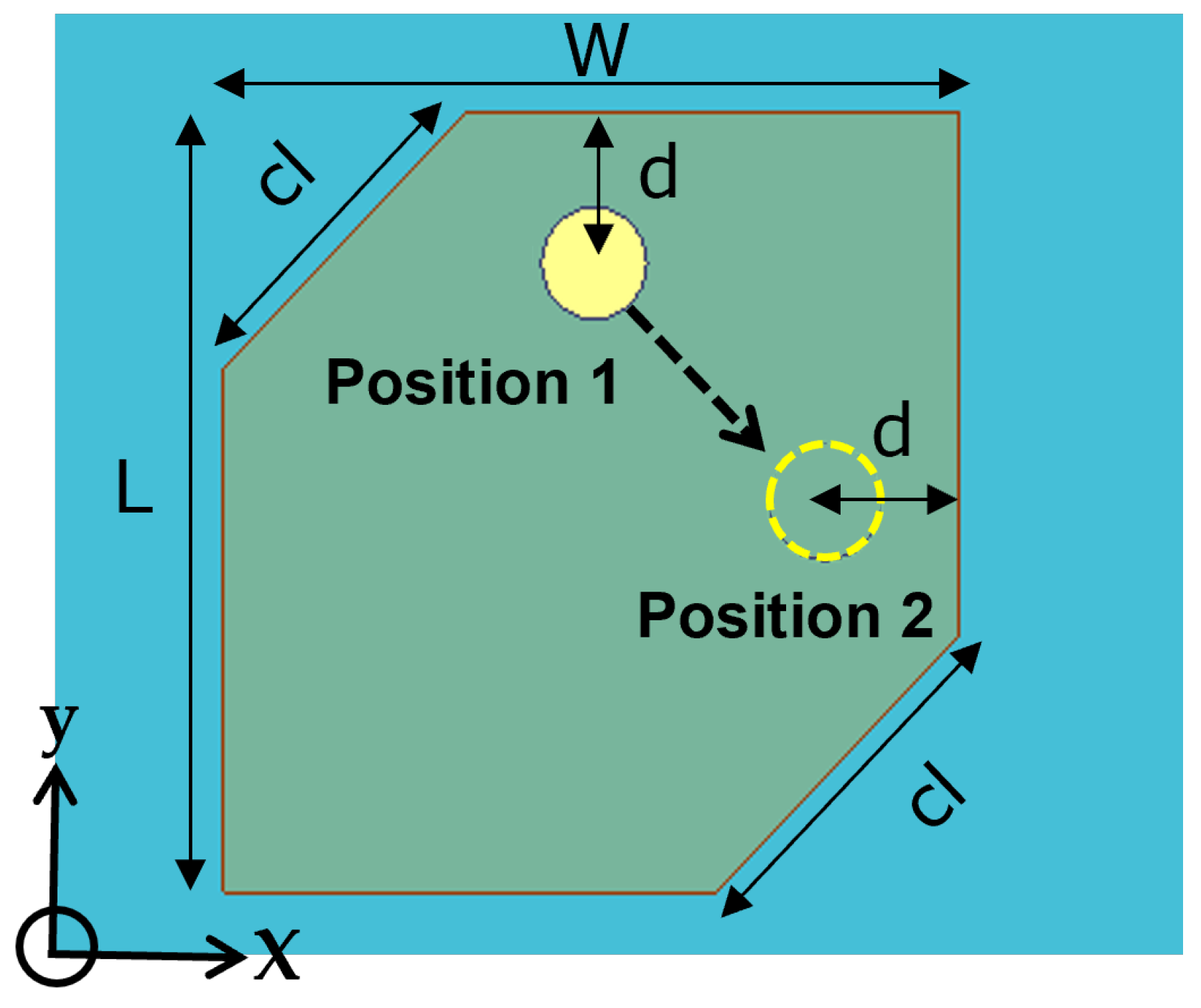

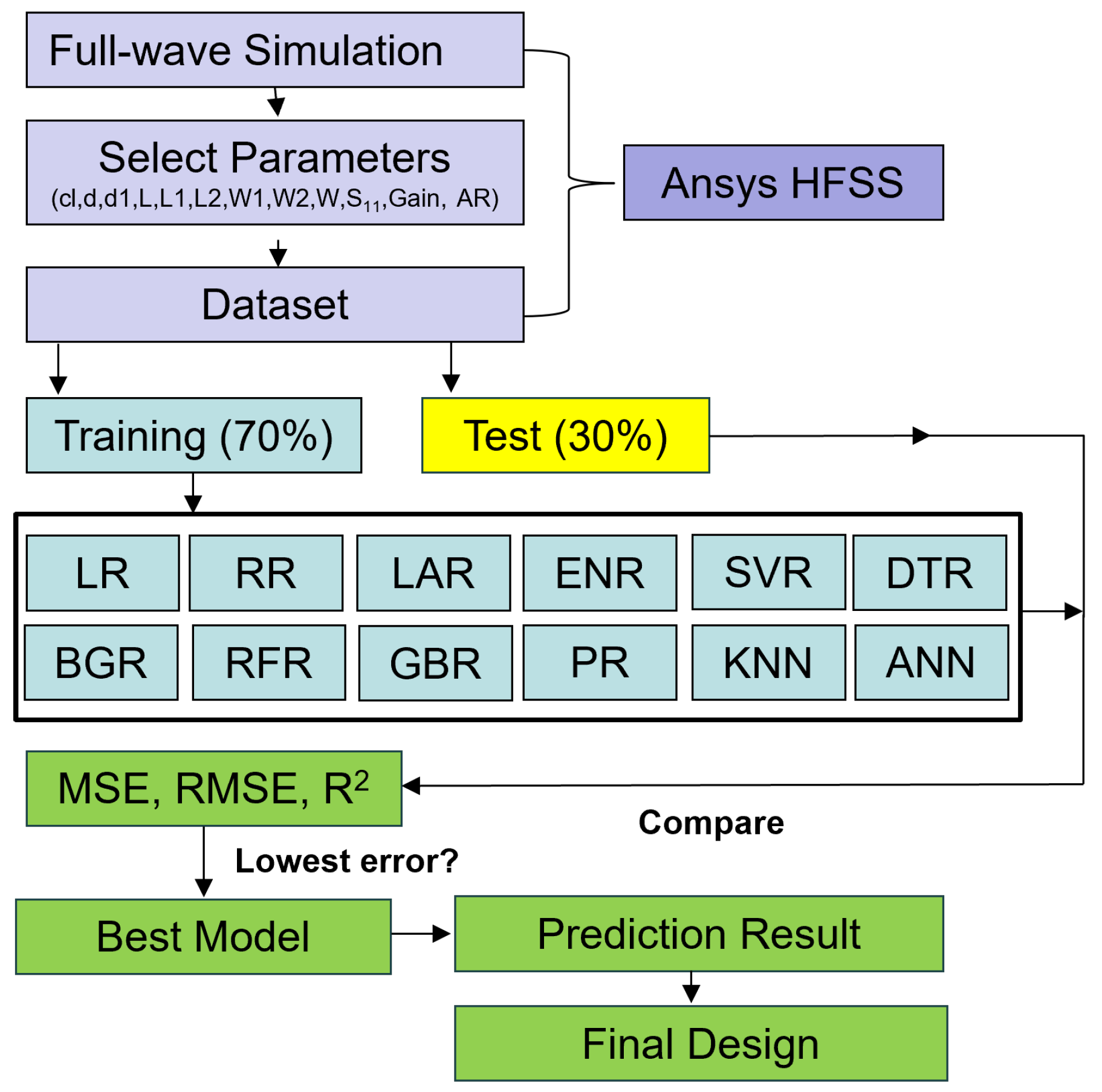
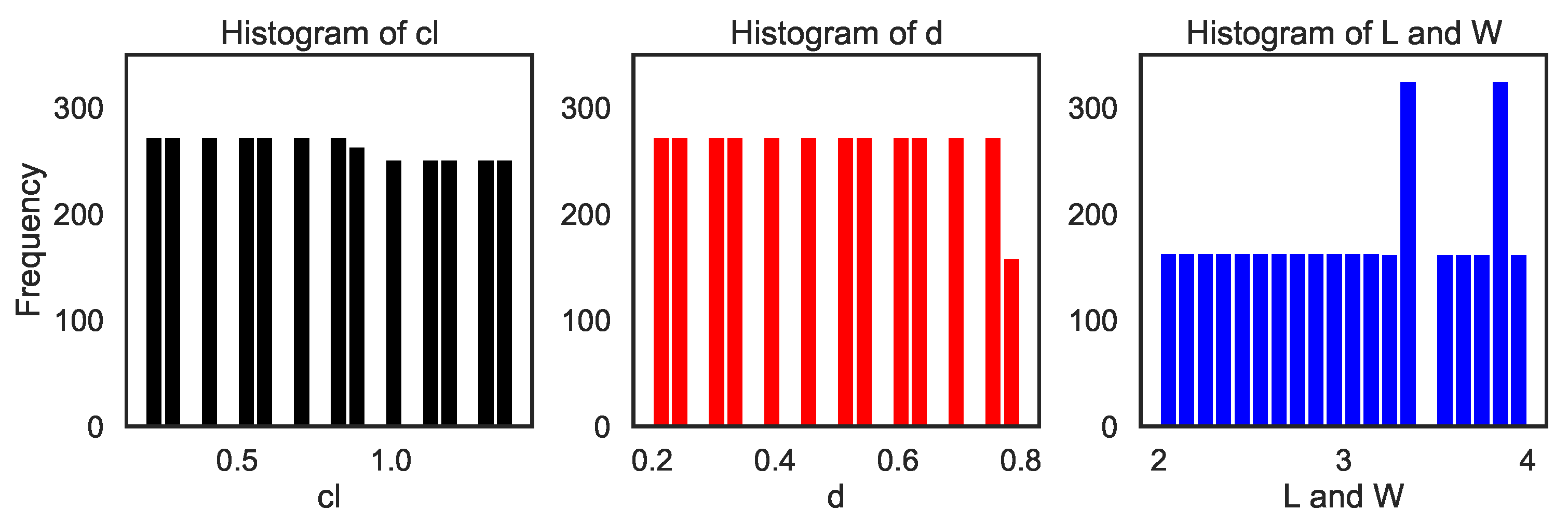

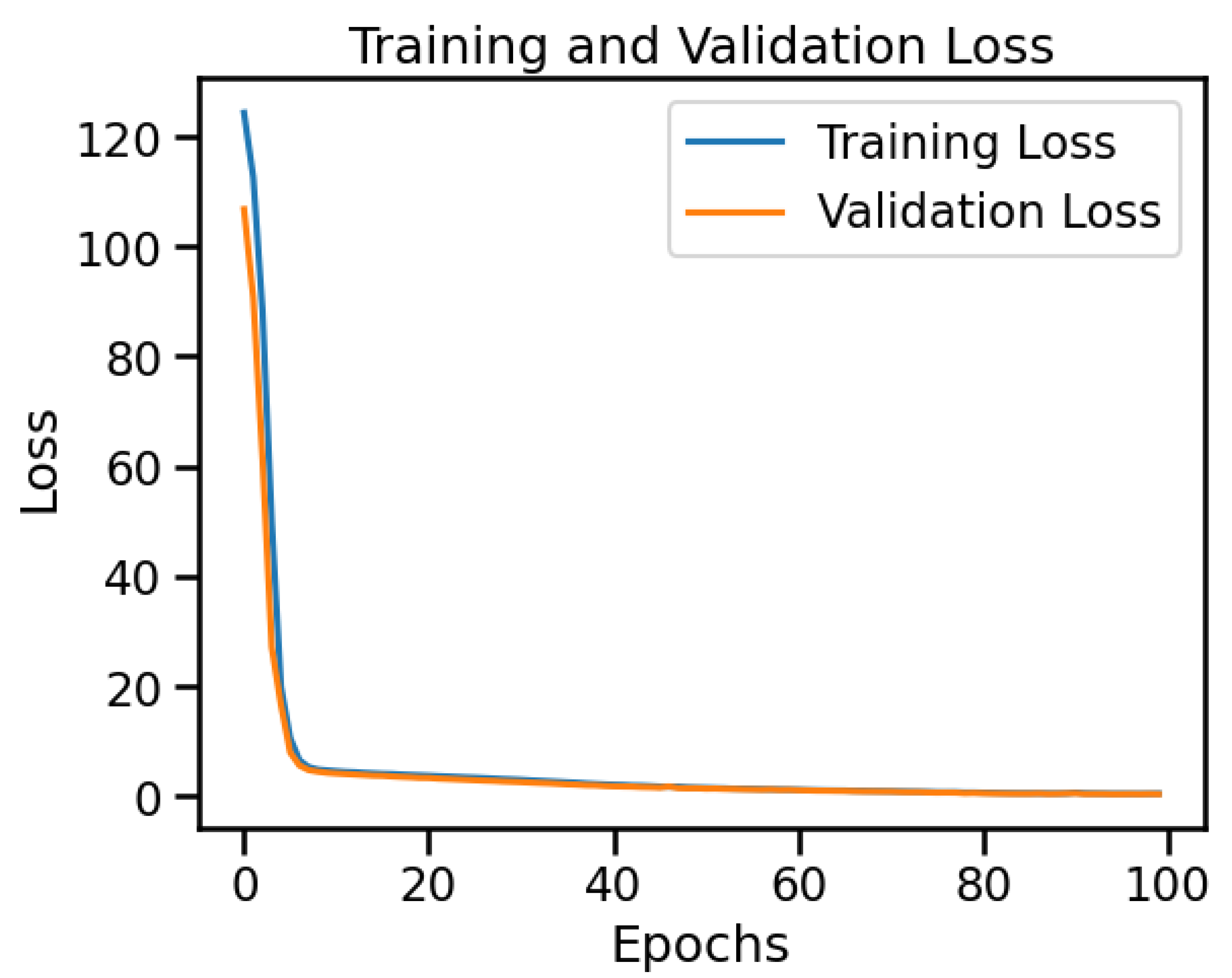
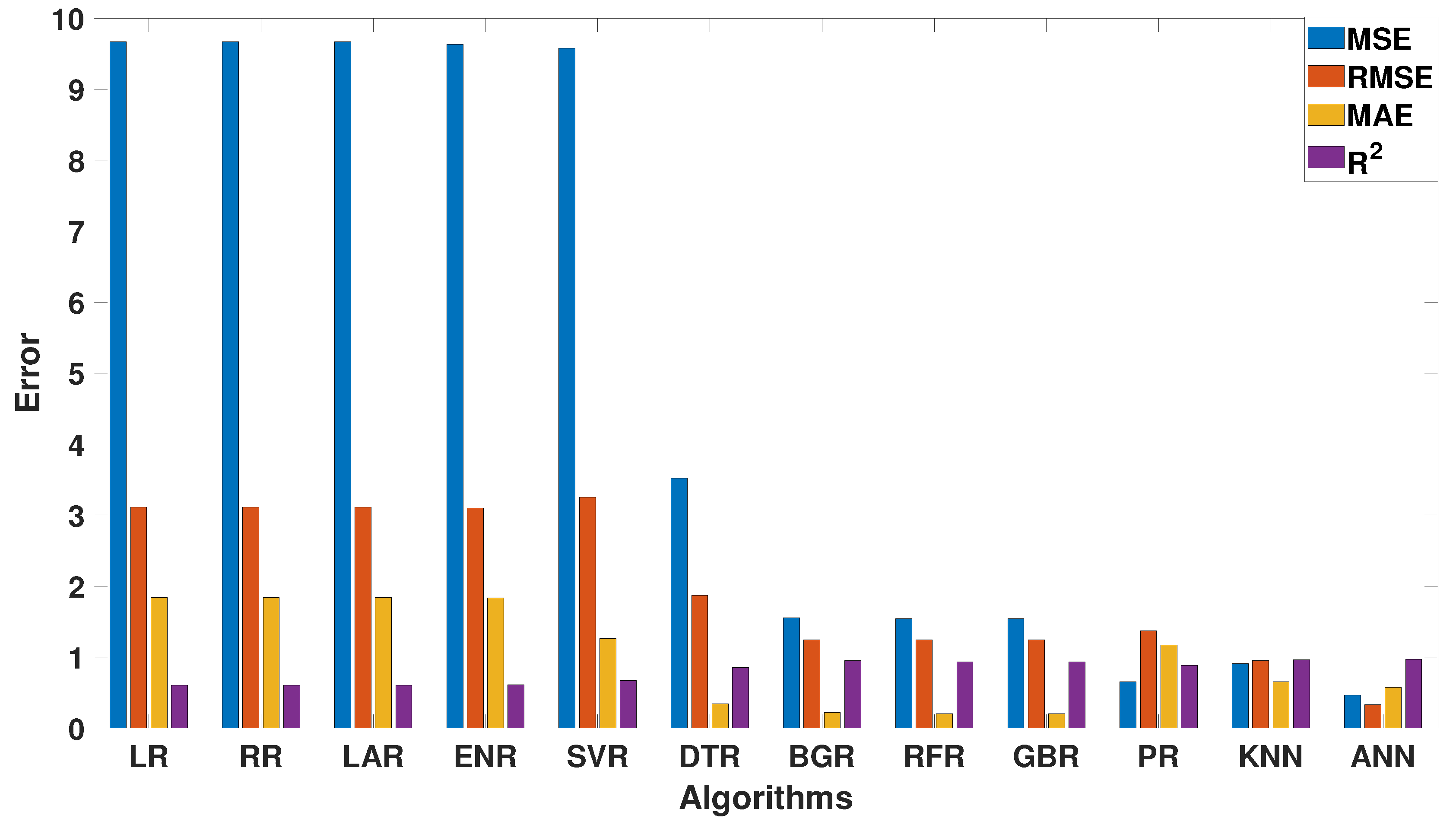
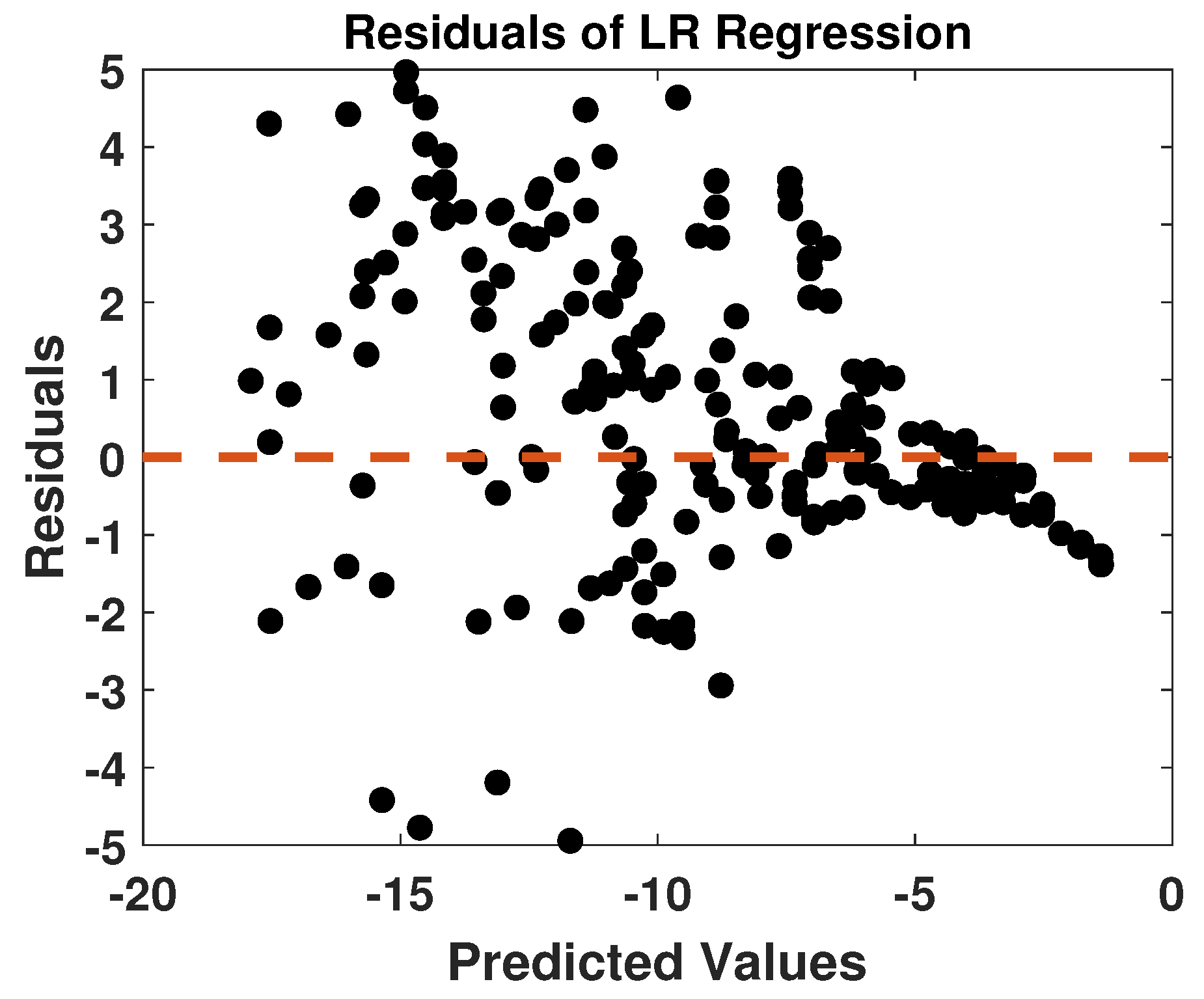
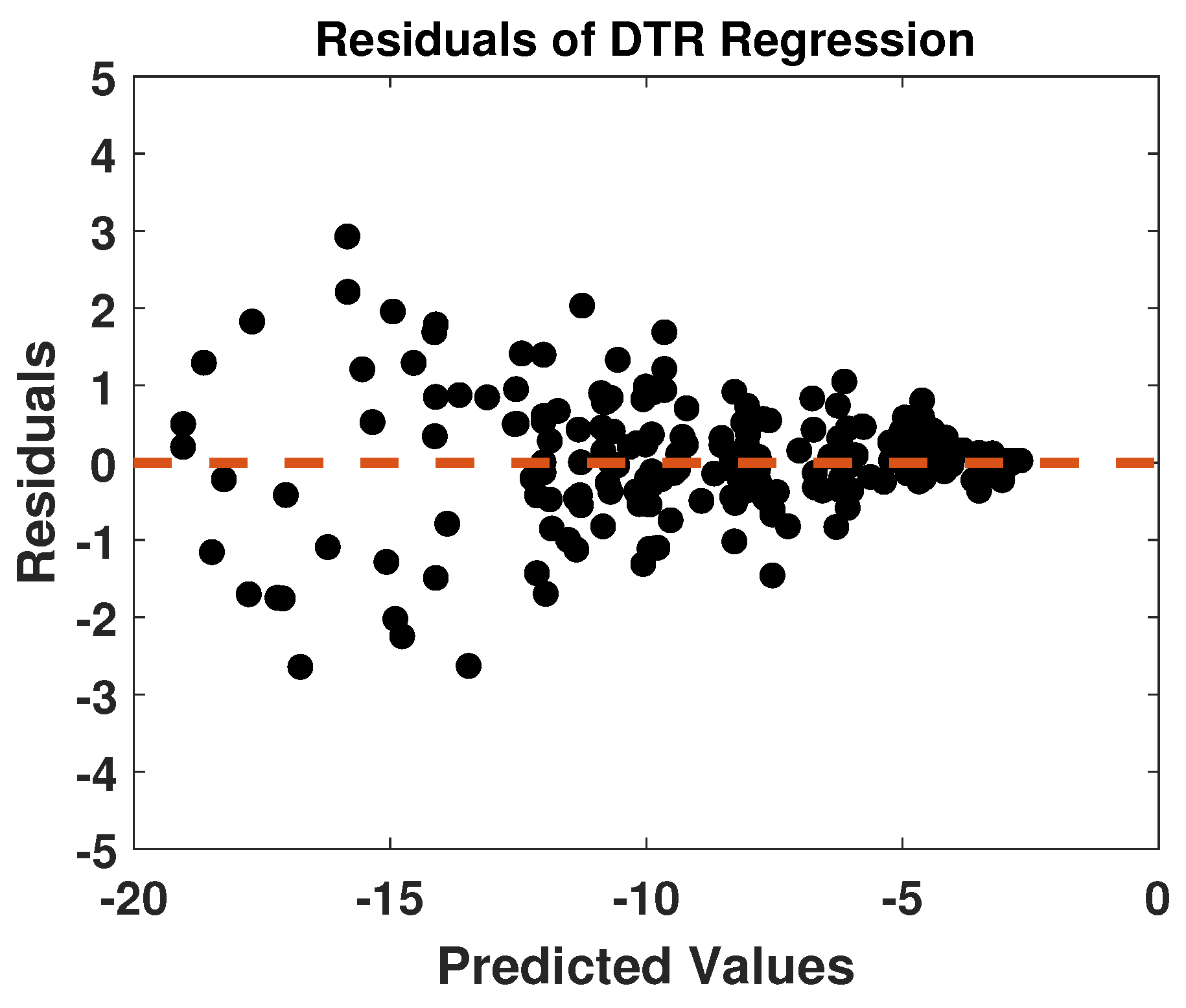
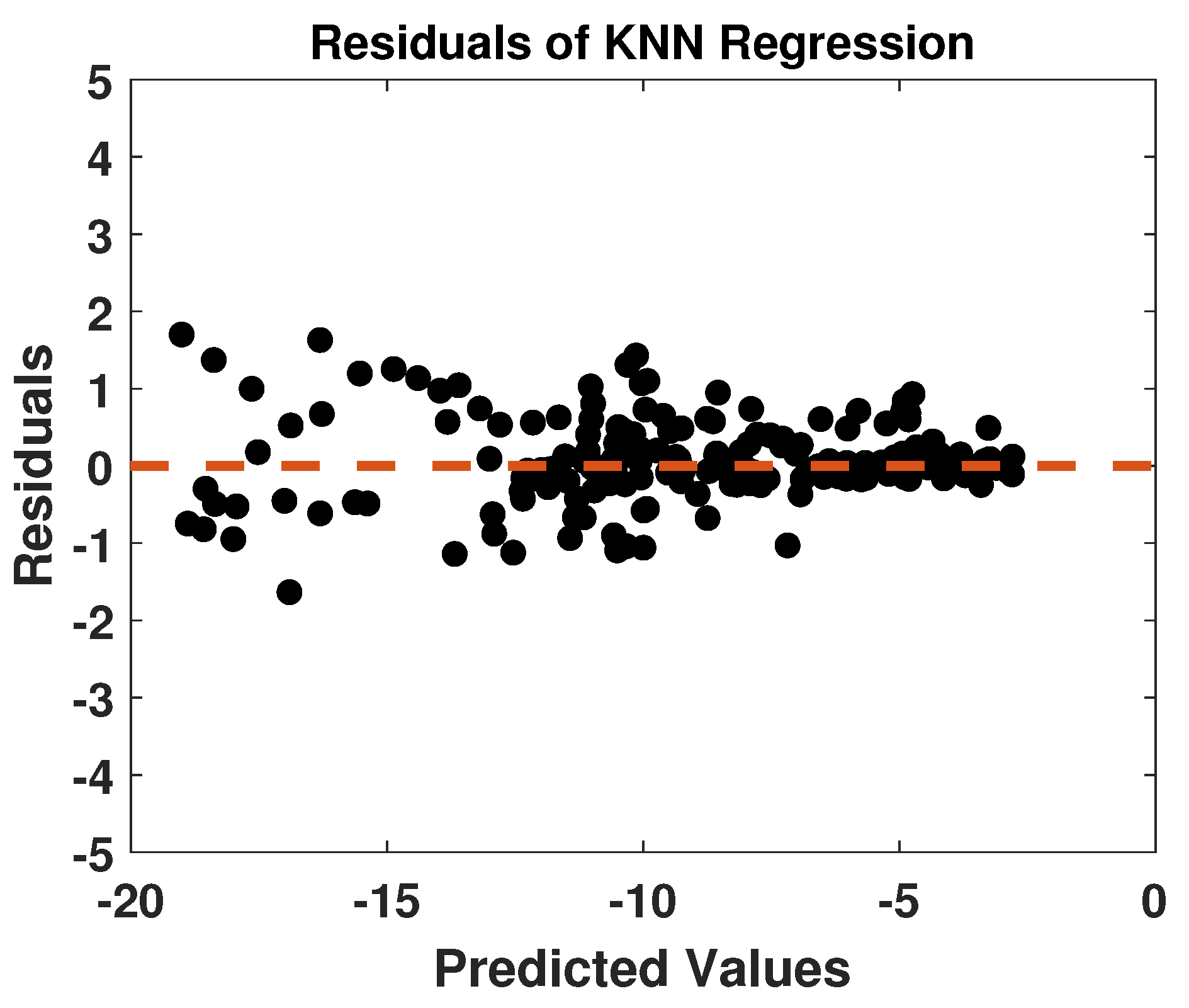
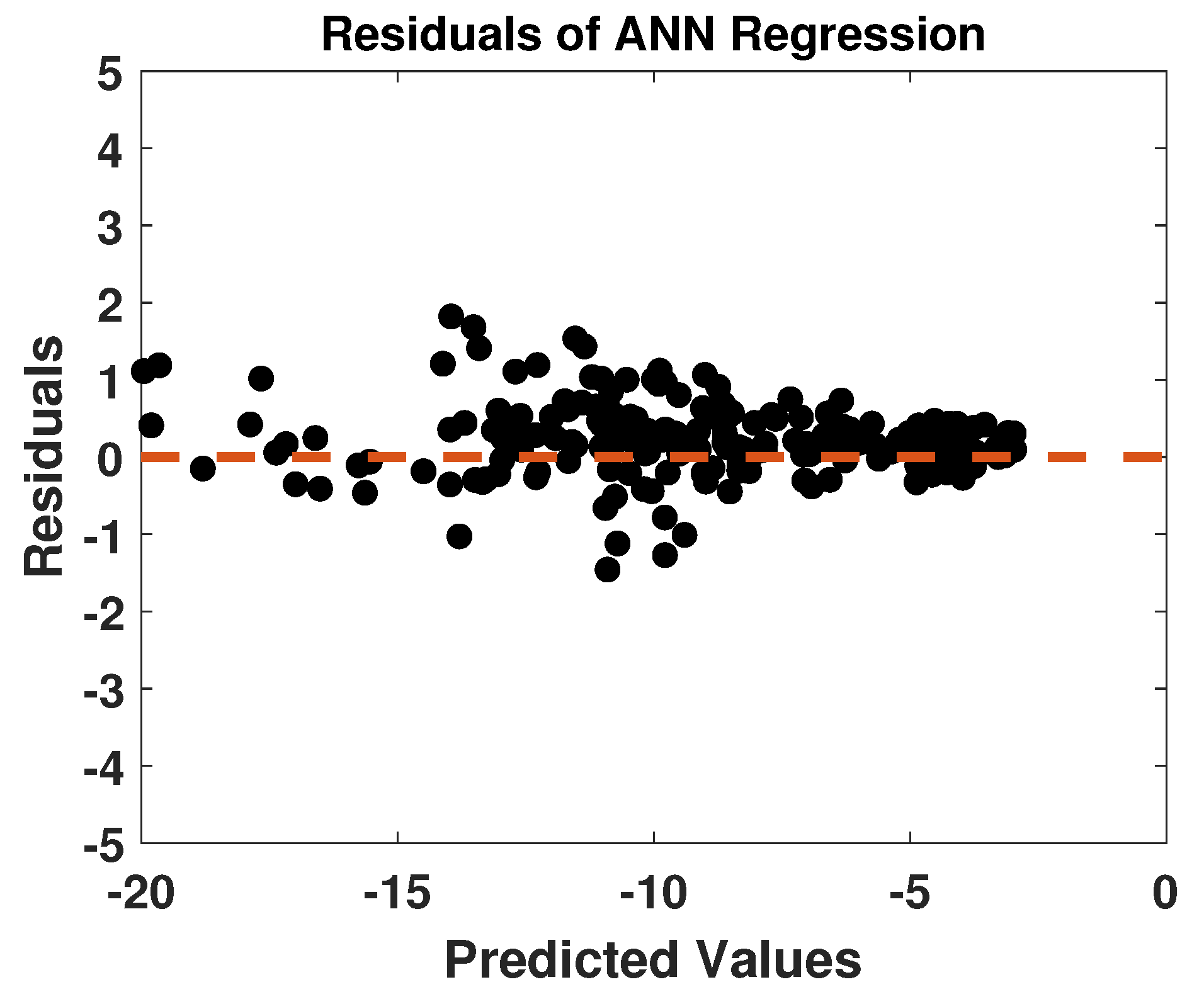
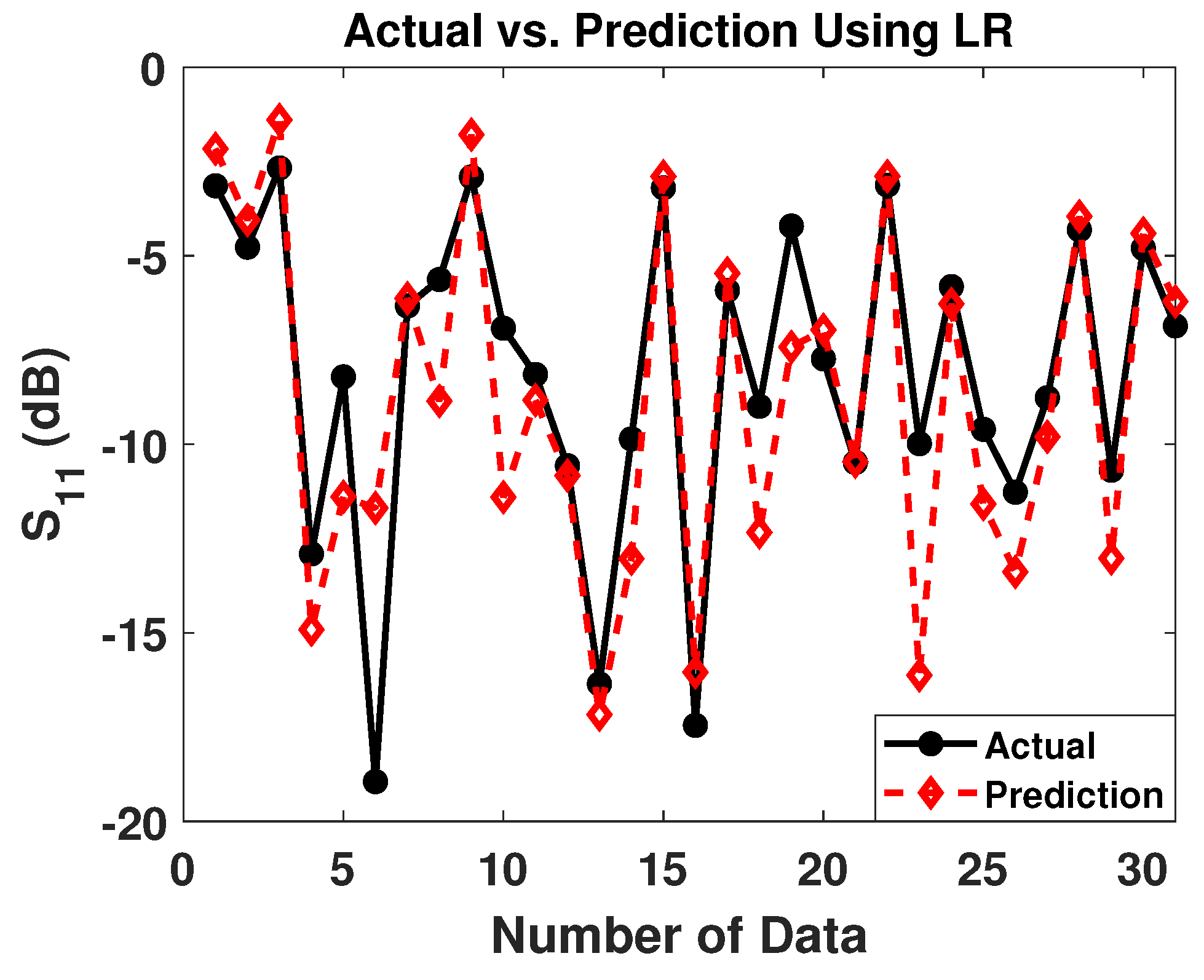
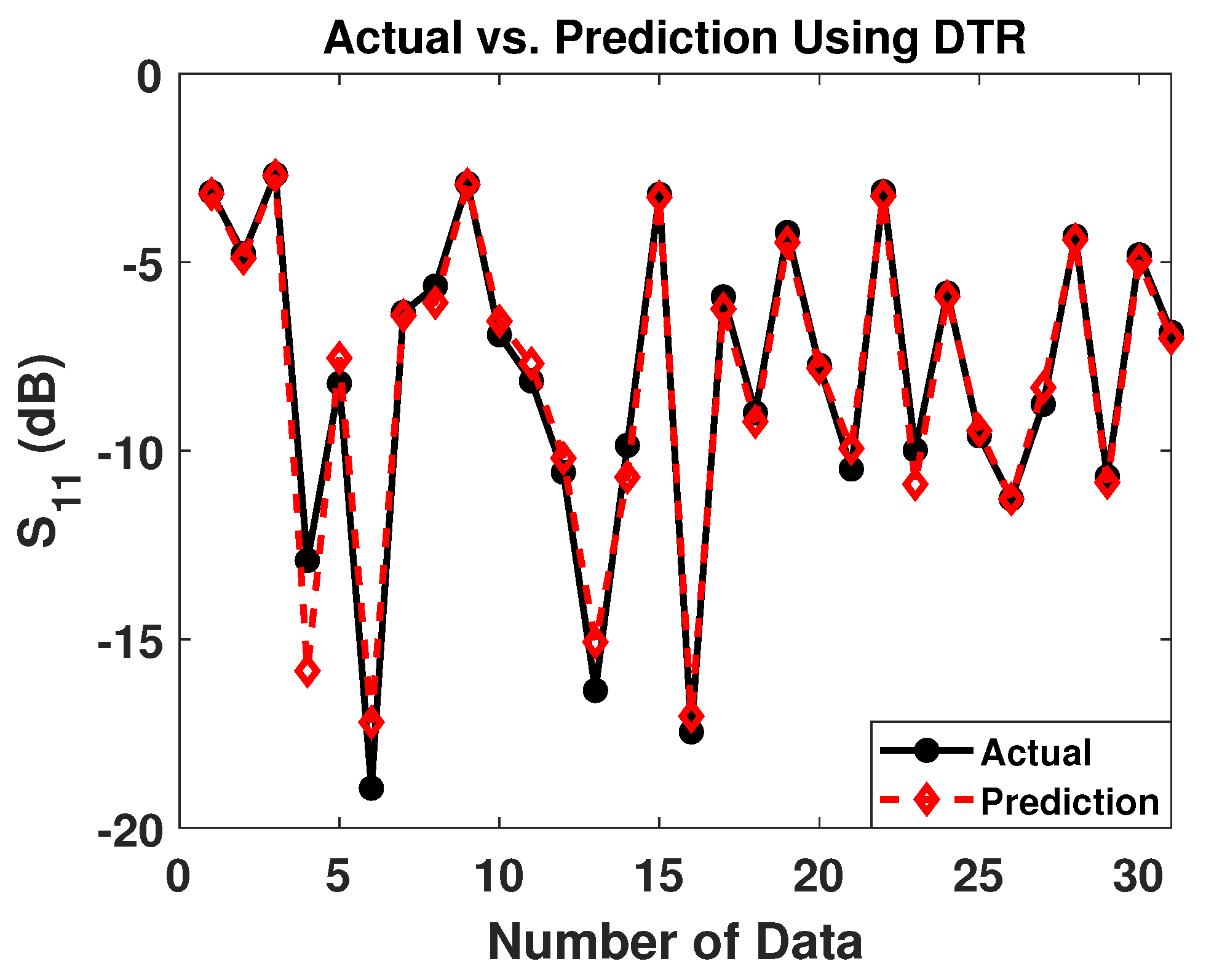

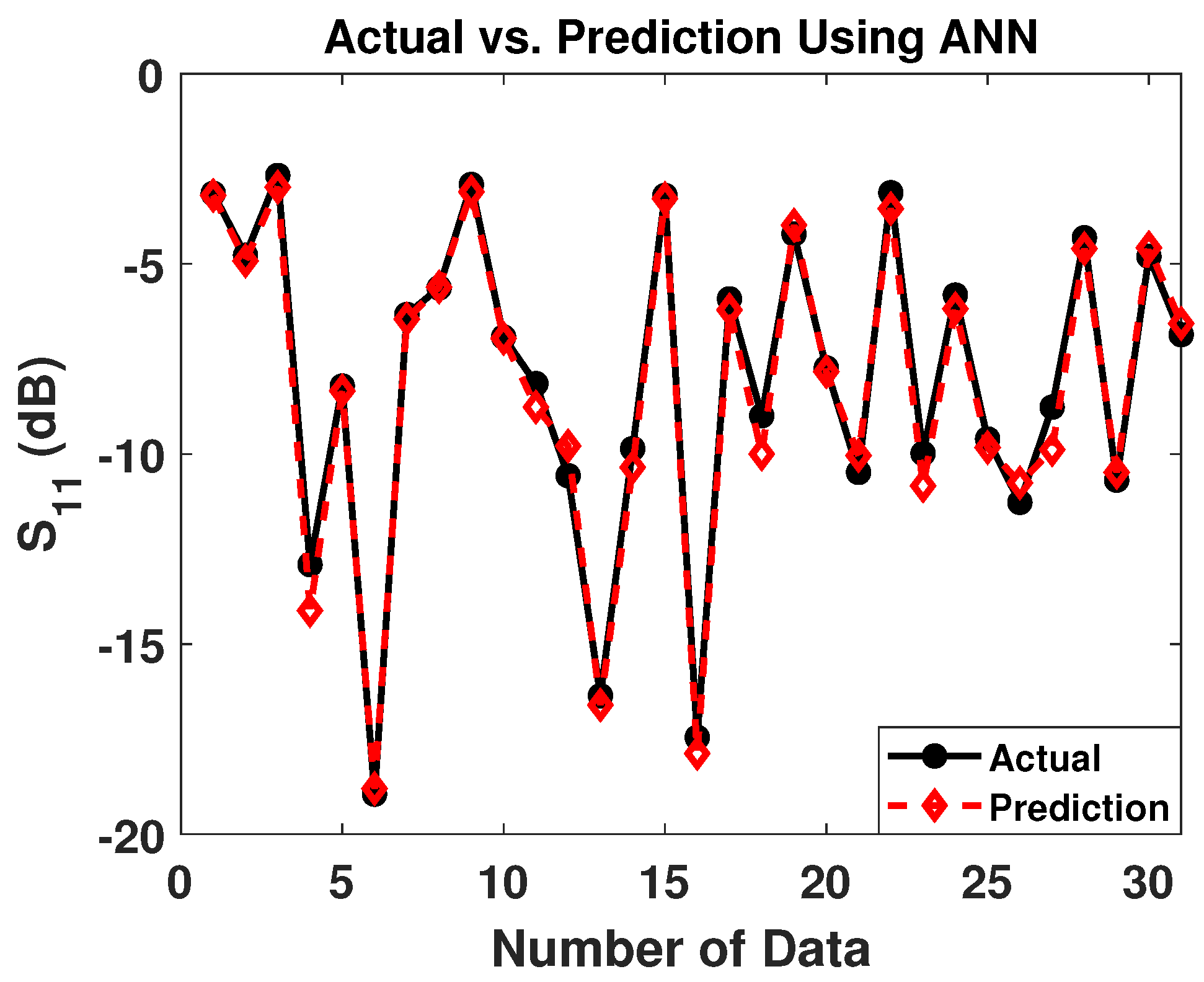
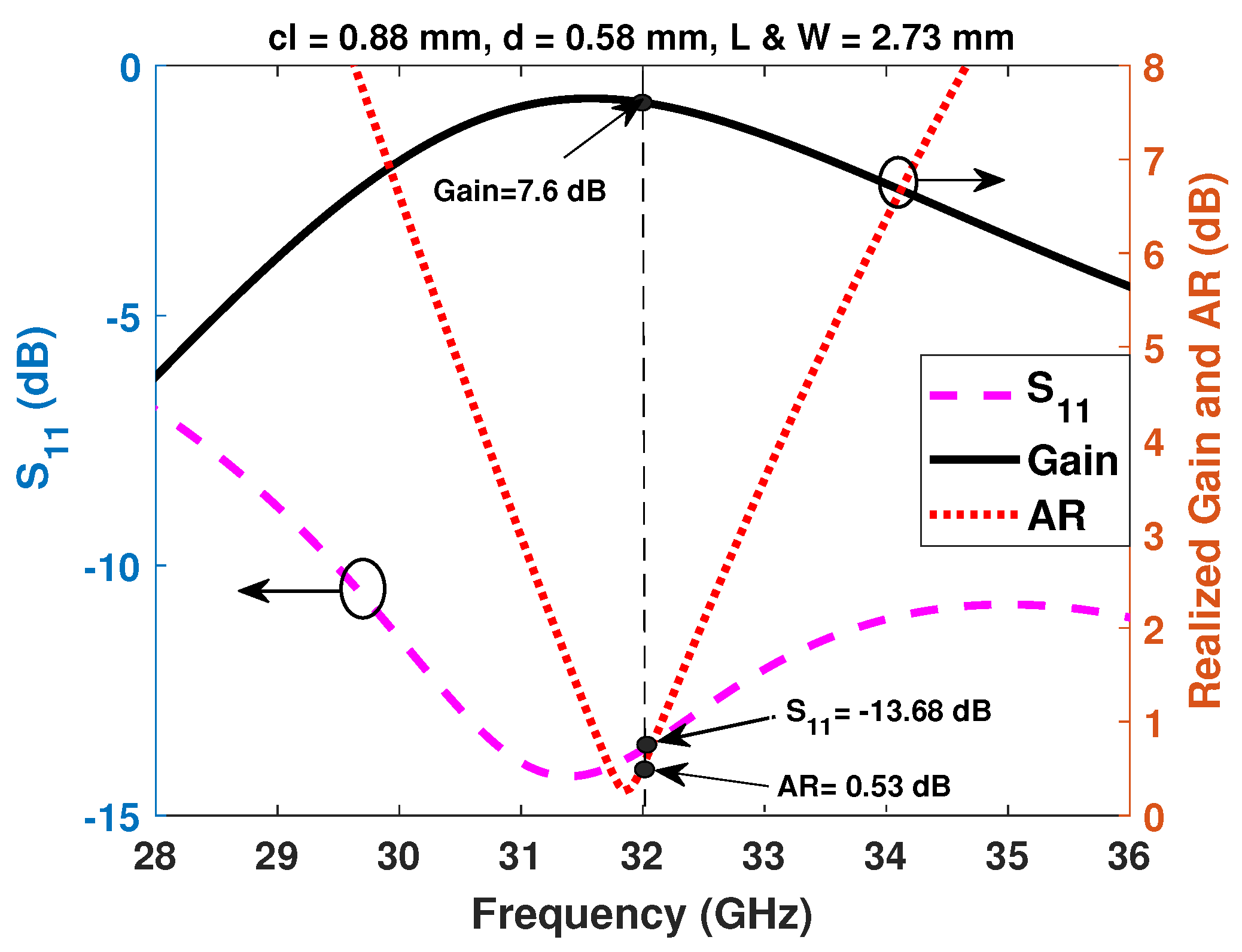
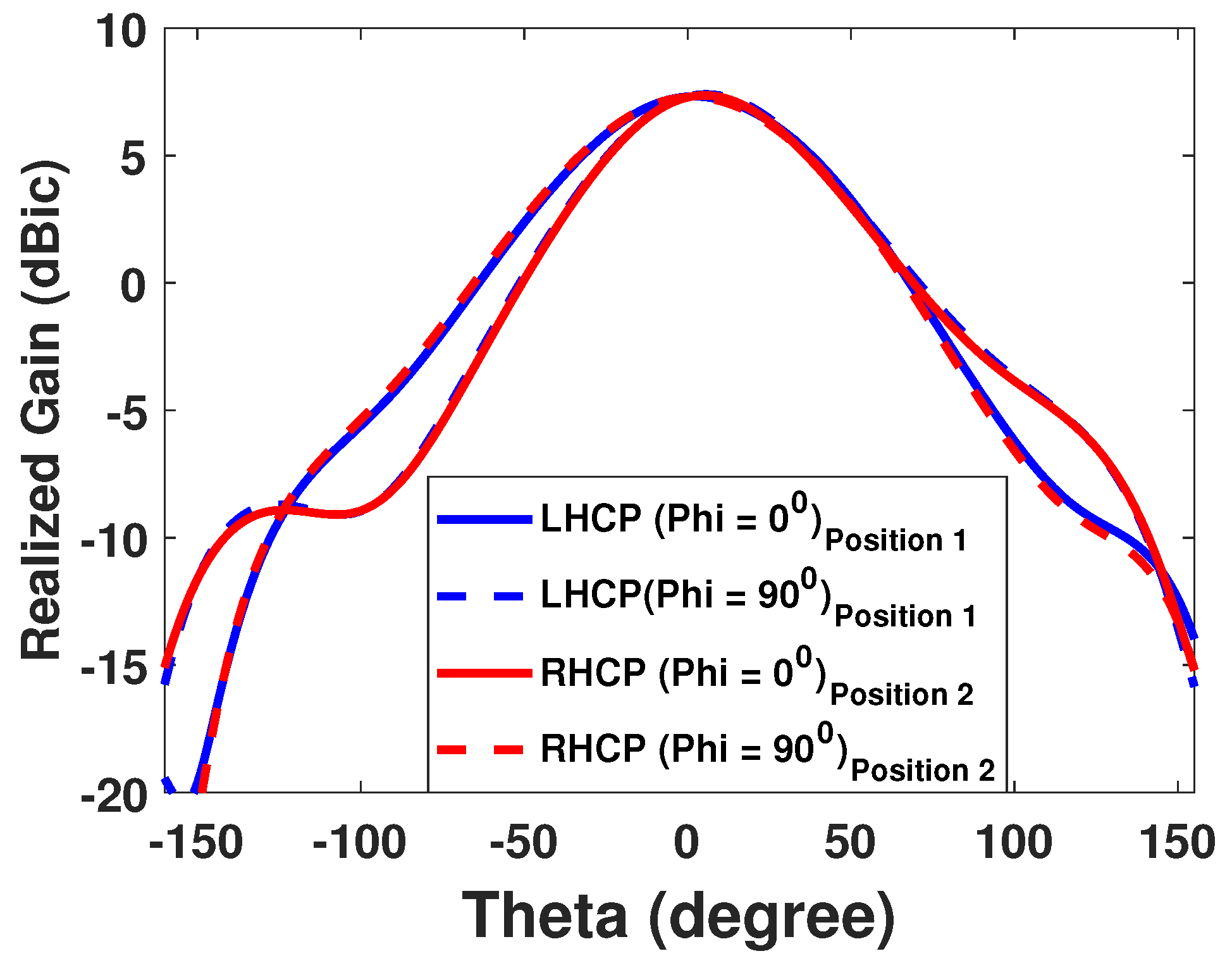
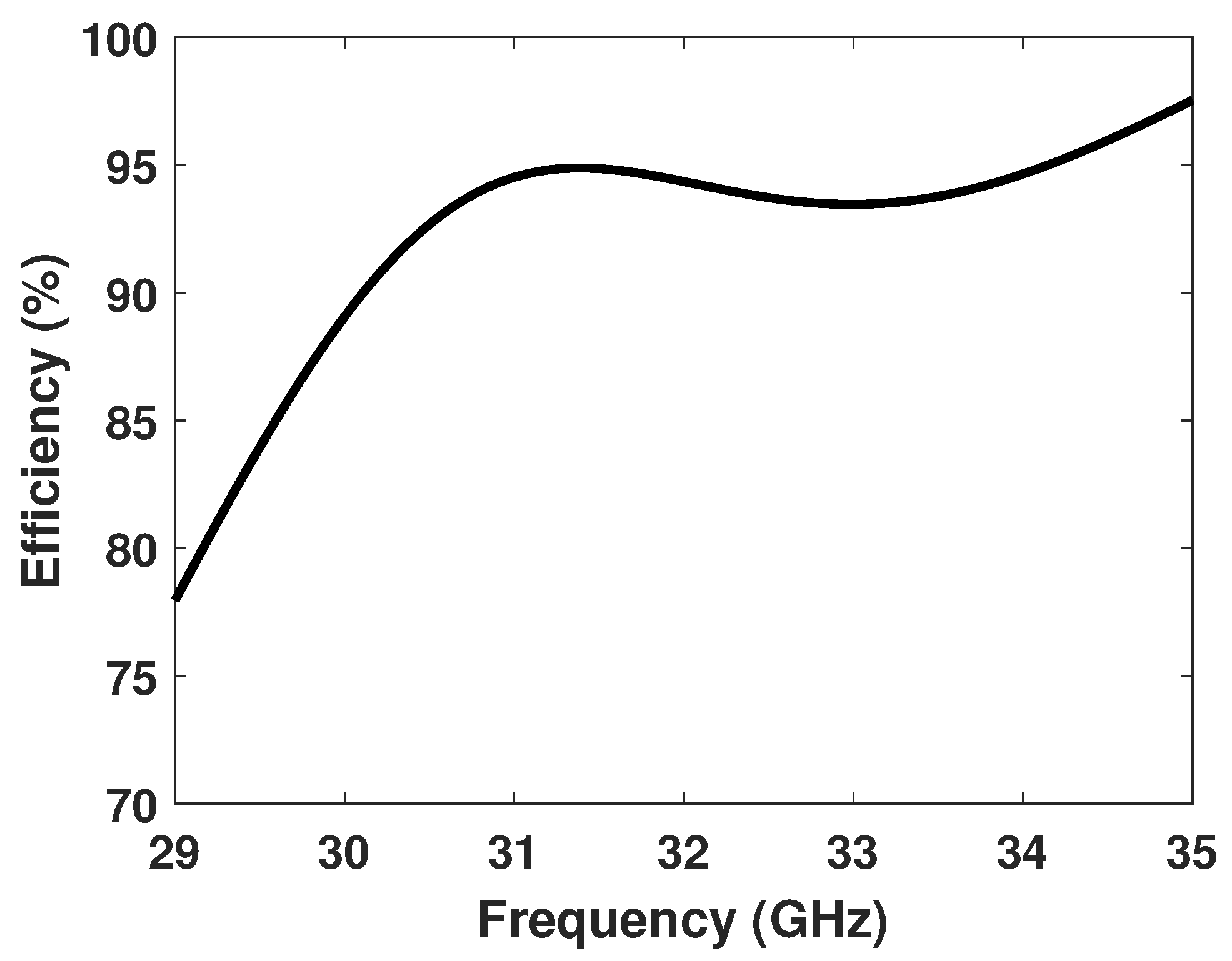
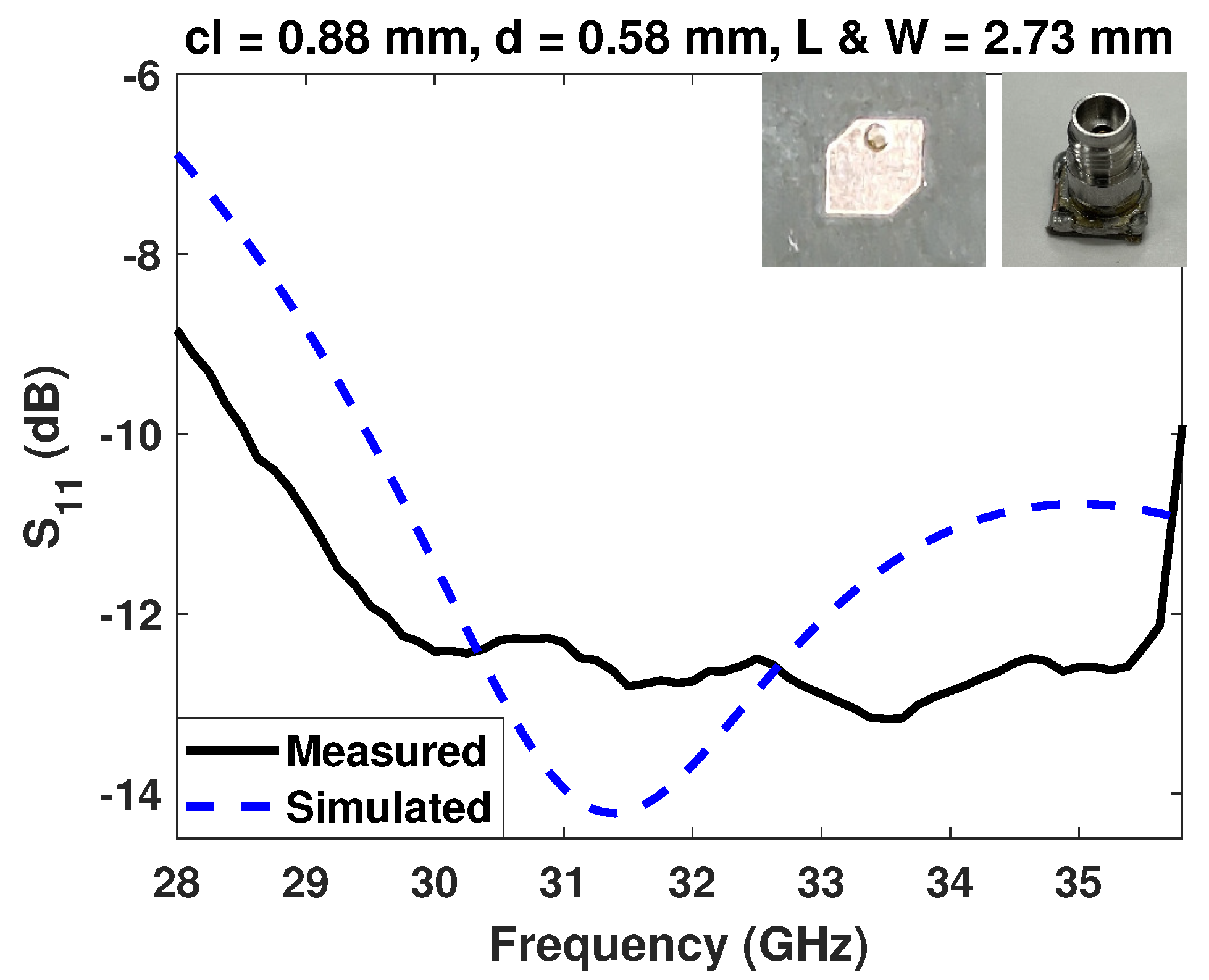
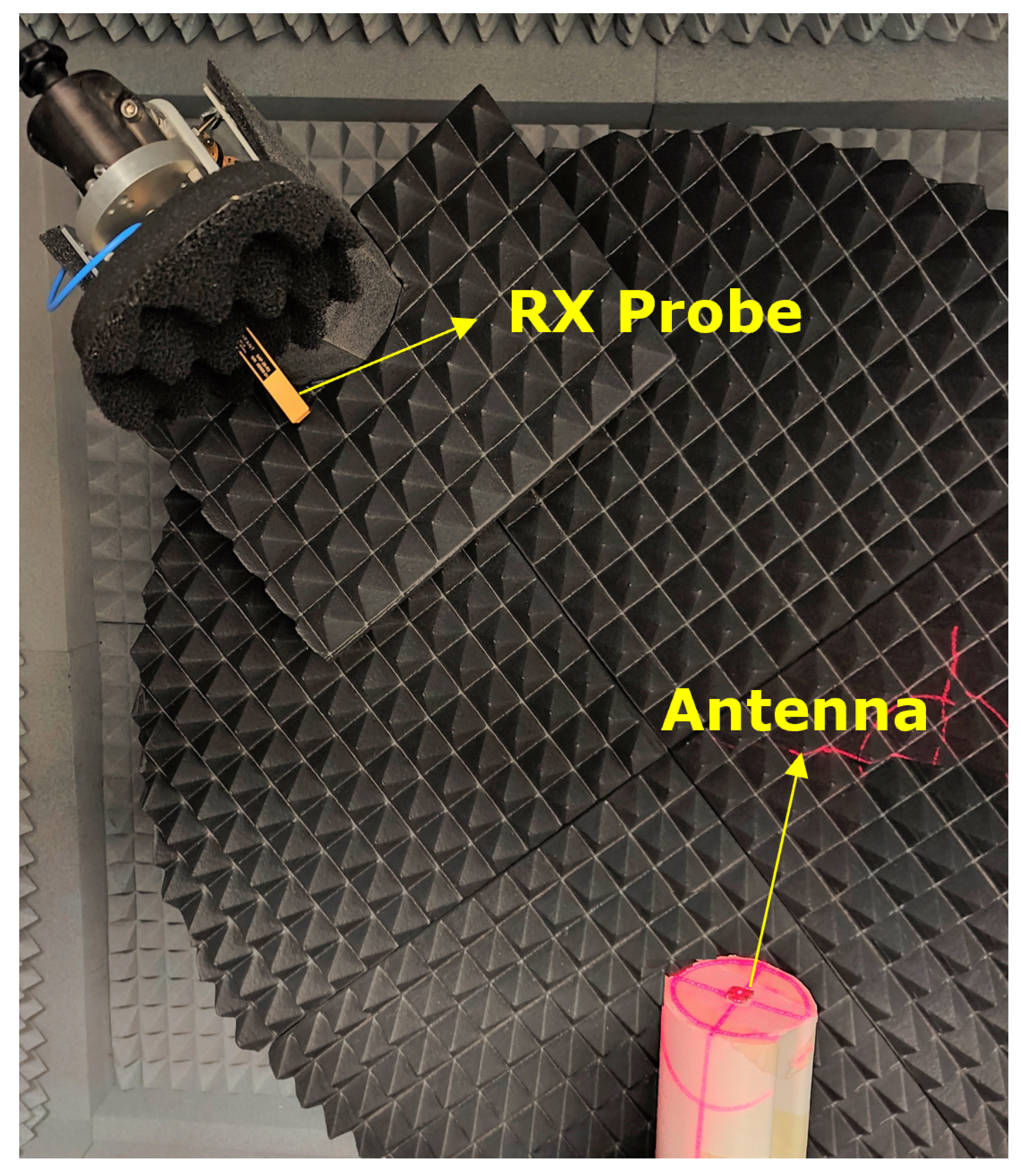

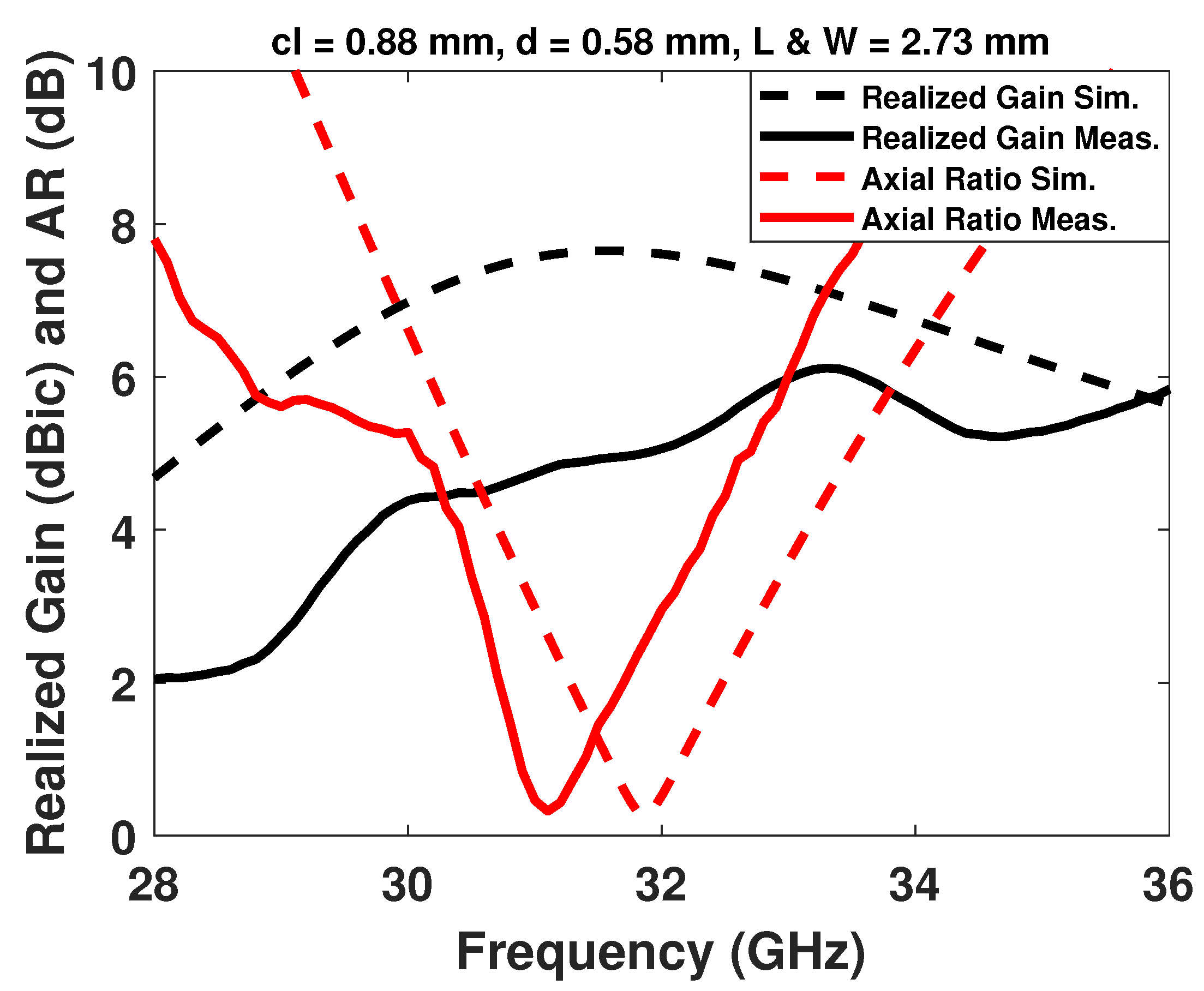
| Algorithm | MAE | MSE | RMSE | R |
|---|---|---|---|---|
| LR | 1.84 | 9.67 | 3.11 | 0.60 |
| RR | 1.84 | 9.67 | 3.11 | 0.60 |
| LAR | 1.84 | 9.66 | 3.10 | 0.60 |
| ENR | 1.847 | 9.63 | 3.10 | 0.61 |
| SVR | 1.26 | 9.58 | 3.25 | 0.67 |
| DTR | 0.34 | 3.52 | 1.87 | 0.85 |
| BGR | 0.22 | 1.55 | 1.24 | 0.95 |
| RFR | 0.20 | 1.54 | 1.24 | 0.93 |
| GBR | 0.20 | 1.54 | 1.24 | 0.93 |
| PR (8th) | 0.65 | 1.37 | 1.17 | 0.88 |
| KNN | 0.11 | 0.91 | 0.95 | 0.96 |
| ANN | 0.46 | 0.33 | 0.57 | 0.97 |
| Algorithm | (dB) | Gain (dBic) | AR (dB) |
|---|---|---|---|
| LR | −17.43 | 6.10 | 5.84 |
| RR | −17.43 | 6.10 | 5.84 |
| LAR | −17.42 | 6.10 | 5.86 |
| ENR | −17.41 | 6.10 | 5.86 |
| SVR | −15.87 | 7.42 | 5.63 |
| DTR | −14.43 | 7.61 | 1.16 |
| BGR | −14.32 | 7.67 | 1.21 |
| RFR | −14.40 | 7.69 | 1.16 |
| GBR | −13.24 | 7.82 | 1.65 |
| PR (8th) | −13.48 | 7.8 | 1.57 |
| KNN | −13.45 | 7.64 | 0.82 |
| ANN | −13.70 | 7.63 | 0.71 |
| Full-wave Simulation | −13.68 | 7.6 | 0.53 |
| Method | Time (ms) |
|---|---|
| LR | 3.67 |
| RR | 4.78 |
| LAR | 4.95 |
| ENR | 3.98 |
| SVR | 14.9 |
| DTR | 4.98 |
| BGR | 41.7 |
| RFR | 36.9 |
| GBR | 53.8 |
| PR (8th order) | 7.6 |
| KNN | 5.96 |
| ANN | 4.87 |
| Full-wave Simulation | 63,000 |
Disclaimer/Publisher’s Note: The statements, opinions and data contained in all publications are solely those of the individual author(s) and contributor(s) and not of MDPI and/or the editor(s). MDPI and/or the editor(s) disclaim responsibility for any injury to people or property resulting from any ideas, methods, instructions or products referred to in the content. |
© 2023 by the authors. Licensee MDPI, Basel, Switzerland. This article is an open access article distributed under the terms and conditions of the Creative Commons Attribution (CC BY) license (https://creativecommons.org/licenses/by/4.0/).
Share and Cite
Uddin, M.N.; Islam, M.K.; Ortiz, M.; Alwan, E.A. Intelligent Design Prediction of a Circular Polarized Antenna for CubeSat Application Using Machine Learning Algorithms. Electronics 2023, 12, 4195. https://doi.org/10.3390/electronics12204195
Uddin MN, Islam MK, Ortiz M, Alwan EA. Intelligent Design Prediction of a Circular Polarized Antenna for CubeSat Application Using Machine Learning Algorithms. Electronics. 2023; 12(20):4195. https://doi.org/10.3390/electronics12204195
Chicago/Turabian StyleUddin, Md Nazim, Md Khadimul Islam, Michael Ortiz, and Elias A. Alwan. 2023. "Intelligent Design Prediction of a Circular Polarized Antenna for CubeSat Application Using Machine Learning Algorithms" Electronics 12, no. 20: 4195. https://doi.org/10.3390/electronics12204195
APA StyleUddin, M. N., Islam, M. K., Ortiz, M., & Alwan, E. A. (2023). Intelligent Design Prediction of a Circular Polarized Antenna for CubeSat Application Using Machine Learning Algorithms. Electronics, 12(20), 4195. https://doi.org/10.3390/electronics12204195






